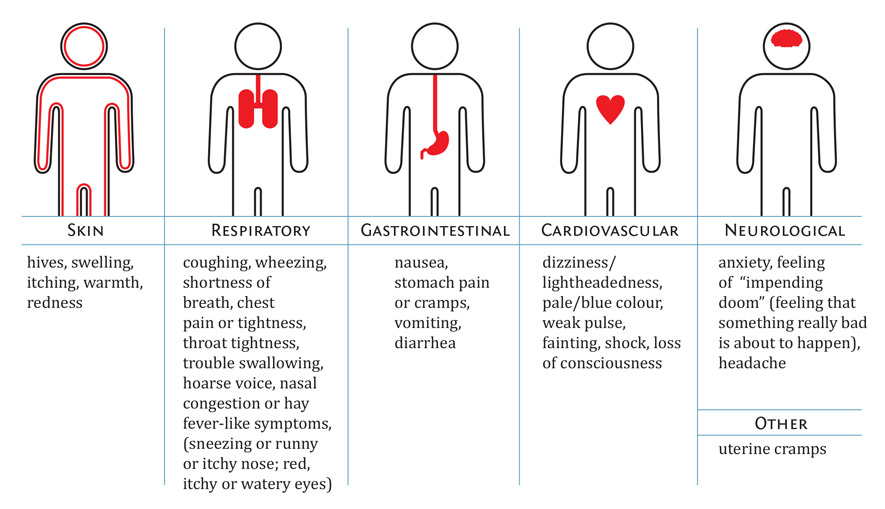Check out what’s new in food allergy research, plus, check out our latest mythbuster.
Research: Forty percent of people with peanut allergy can eat tree nuts but choose not to

Previous studies have found the rate of tree nut allergy in those allergic to peanuts to be as low as 7%. New research reveals that most people with a peanut allergy can safely eat tree nuts, yet nearly 40 percent choose not to. The most common reason for such avoidance is the risk of cross-contamination, when a small amount of a food allergen gets into another food accidentally.
In this U.S. study there were 258 people with peanut allergy who participated, 37% ate all tree nuts, 24% ate some but not all, and 39% did not eat any. The tree nut most eaten was almond and results showed that “nearly 90% of peanut-allergic individuals in the study could potentially tolerate almonds, but 33% of them preferred strict avoidance due to the fear of an allergic reaction.”
The 39% who avoided all tree nuts did so for different reasons, including cross-contamination, lack of desire, young age, and a high likelihood of being allergic. Additionally, the study notes that the reasons for avoidance can change over time, as an individual grows older, or as siblings mature or outgrow their food allergies, and suggests that tree nut consumption be periodically revisited.
For more information, read the press release.
Remember: Having a peanut allergy does not mean you are allergic to tree nuts. Talk to your allergist about any concerns you may have.
Research: Exposure to air pollution in early pregnancy linked to a baby’s risk of developing allergies

A new study shows that a mother’s exposure to traffic-related air pollution (TRAP) during the first trimester is associated with an increase in her baby’s risk of allergic sensitization by age one. Such sensitization is a risk factor for the development of allergies and asthma later in childhood.
Researchers studied 145 mothers and their children participating in the CHILD Cohort Study, a prospective longitudinal birth cohort study of participants over time as they grow and develop, and used geospatial models to determine the level of TRAP the mothers were exposed to during pregnancy. At age one, the children had skin prick tests to check for allergic sensitization to common food allergens (i.e. cow’s milk, egg white, soy, peanut) and inhaled allergens (e.g. house-dust mites, cat hair).
This is the first study to show that a biological marker of fetal development – epigenetic gestational age (eGA) – can be used to understand how TRAP can change cell make-up to affect the activity of a baby’s genes related to allergy and asthma. It notes that eGA holds great promise as a biomarker because it may identify babies who deviate from the typical developmental profile, allowing targeted early preventative interventions.
For more information, read the press release.
Research: Early introduction of allergenic foods prevents food allergy in some high-risk babies despite poor dietary adherence

The Enquiring About Tolerance (EAT) study investigated whether the early introduction of certain allergenic foods into the diet of babies may stop them from developing allergy to those foods.
This study involved 1,303 three-month-old babies from England and Wales who were placed in one of two groups. One group was introduced to six allergenic foods along with breastfeeding and was known as the Early Introduction Group (EIG). The other group exclusively breastfed for six months and was termed the Standard Introduction Group (SIG).
Results showed that babies with sensitization to one or more of the six allergenic foods at enrollment who were part of the EIG developed less food allergies (19.2%) than babies with food sensitization at enrollment who were not introduced to foods early (34.2%). These results occurred despite low adherence to the early introduction regimen (the sequential introduction of the six allergenic foods). Note: Sensitization is the development of a protein called an “IgE antibody” to a specific allergen following exposure. This is a key step in developing an allergy to that allergen, however, not all individuals who are sensitized have allergy.
Three papers based on the EAT study have recently been released which highlight encouraging results and identify the barriers to dietary adherence:
- One study found that early introduction was effective in preventing the development of food allergy in specific groups of babies at high risk of developing food allergy despite poor dietary adherence.
- Another study looked at the factors responsible for non-adherence and showed that increased maternal age, non-white ethnicity, and lower maternal quality of life were more associated with overall non-adherence in the EIG.
- A study further reviewed the factors influencing non-adherence through a series of questionnaires at different periods of time. Three main challenges were identified: children refusing allergenic foods, caregiver concerns about the foods causing a reaction, and practical problems such as lifestyle constraints and food prep issues.
According to Gideon Lack, MD, of King’s College London and Principal Investigator of the EAT study: “The EAT study has provided us with a wealth of data that is still being analyzed. As more research about early introduction of specific food allergens continues, we will get closer to new early introduction recommendations that will hopefully help to prevent food allergies in the future.”
For more information, read the press release.
Learn more about how to prevent food allergy at foodallergycanada.ca/earlyintro.
Mythbuster – Do allergic reactions worsen with each exposure to an allergen?

FACT: The severity of an allergic reaction is unpredictable. Reactions can range from mild to severe and can vary from person to person as well as from one reaction to the next in the same individual.
Different factors, called co-factors, can lower the threshold at which one reacts. These include asthma, general health at the time the food was eaten, alcohol, medication, and exercise.
Bottom line: Allergic reactions are serious, and the severity can be different each time. It is important to pay attention to early symptoms, even if they seem mild, especially if you have had a reaction in the past.
Learn how to recognize the signs and symptoms of an allergic reaction so that you can give life-saving epinephrine early. Check out our reaction signs and symptoms page.
